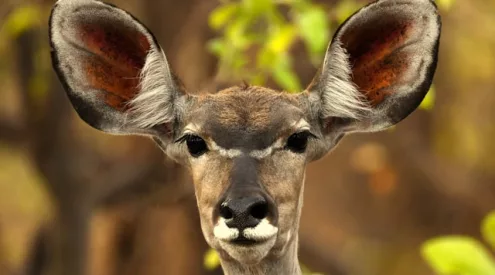A new report by the African Lion & Environmental Research Trust in collaboration with Dr. Jackie Abell of Lancaster University discusses whether existing conservation efforts alone are capable of saving the African lion from extinction (read: The men who protect their lions). The authors suggest that lions of captive origin can provide an additional source for reintroduction recognising that this should be undertaken alongside existing conservation efforts. They recognize that reintroducing lions of captive origin has complications.
Estimates of lion populations published at the end of 2012 by a team at the Nicholas School of the Environment suggested that between 32 000 and 35 000 lions remain in Africa and that there is ‘abundant evidence of widespread decline and local extinctions’ even in protected areas. The UK-based charity Lion Aid estimate numbers may be as low 15 000.
Ex situ management (i.e. off-site, or outside the animal’s natural habitat) for threatened species is common in conservation, yet the use of lions from a captive origin is not currently recognized by the International Union for the Conservation of Nature (IUCN) despite the IUCN’s own reintroduction guidelines that state:
‘The reality of the current situation is that it will not be possible to ensure the survival of an increasing number of threatened taxa without effectively using a diverse range of complementary conservation approaches and techniques including, for some taxa, increasing the role and practical use of ex situ techniques. If the decision to bring a taxon under ex situ management is left until extinction is imminent, it is frequently too late to effectively implement, thus risking permanent loss of the taxon. Priority should be given to the ex situ management of threatened taxa and threatened populations of economic or social/cultural importance.’
The authors recognize that in situ conservation programs must continue to be the mainstay of efforts to protect habitat for lions to survive. Dr. Abell, lead author of the new report, is concerned with a lack of empirical evidence that current conservation solutions for lions are working, or can work in the long term. Given the speed of decline in lion populations; 80 – 90% since 1975, and the IUCN’s Red List classification assessment that ‘… the reduction or its causes may not have ceased OR may not be understood OR may not be reversible”, the authors suggest it is necessary to ensure that there is a back-up plan to complement in situ efforts.
The IUCN technical guidelines for ex situ management are based on fulfilment of one or more of the following Red List criteria: “When the taxa/population is prone to effects of human activities or stochastic events or When the taxa/population is likely to become Critically Endangered, Extinct in the Wild, or Extinct in a very short time. Additional criteria may need to be considered in some cases where taxa or populations of cultural importance, and significant economic or scientific importance, are threatened” (IUCN, 2002). The report argues that for the African lion, both of these criteria apply.
However, not everyone is convinced. Critics of the use of captive origin lions in reintroduction programs say that such efforts have yet to present sufficient evidence of the merits of ex situ management for lions, and that claims for the need of these programs portray an overly bleak picture of current lion status and on-going conservation initiatives.
In situ conservation efforts for lions are central to the species’ survival, and our charity is using a responsible development approach that encourages African solutions to these African challenges. ALERT is also investigating how previous problems of using captive origin lions for reintroduction can be addressed. As part of this effort, ALERT, and our conservation partners, released a pride of captive-bred lions into a fenced natural environment in 2010 that are self-sustaining and now have cubs that will be old enough to be considered for release into the wild in 2014. A second pride was released in 2011 that have just given birth to their first cubs. Studies undertaken by ALERT, and by independent researchers, suggests that both the released captive-bred pride and their semi-wild borne cubs are behaving and developing exactly as you would see in a free-ranging lion pride. Our intention is to publish the results to date from this pilot program over the coming year. (Read the full article here).
A second report discusses contributing factors to failed and successful captive-bred species reintroductions and revisits previous ex situ efforts to release the African lion into the wild. Whilst past attempts to release captive-bred lions into the wild are largely undocumented in the scientific literature, they have valuable lessons to offer future attempts. A framework is proposed for the ex situ reintroduction of the lion based on scientific guidance and previous undertakings.
Ex situ management for threatened species is common in conservation, yet the use of lions from a captive origin is not currently recognized by the International Union for the Conservation of Nature (IUCN). Regarded as a last resort method, the IUCN recommend the strategy is used when either one or both of the Red List criteria mentioned above are fulfilled. With specific reference to lions the IUCN notes ‘The lion is a flagship species for Africa in terms of research, tourism and trophy-hunting … the lion is a powerful and omnipresent symbol, and its disappearance would represent a great loss for the traditional culture of Africa (it is used in coats of arms, heroic names of former kings, frescos, names of football teams, tales, proverbs, sayings, etc.) — even if to live with the lion poses serious challenges for many African communities, especially those bordering conservation areas which protect lion populations’.
Concerns are raised that captive-bred lions have modified temperament traits and behaviours as a consequence of captivity and human imprinting, an inability to respond adequately to competitive species and predation and that the focus is on genetic variation at the expense of social traits and behaviours by offering impoverished environmental enrichment. As such, captive-bred lions are considered a potential risk to the safety of communities and their livestock in areas where these lions may be released.
Dr. Abell, lead author of the new report notes that previous efforts in ex situ reintroduction for the lion have not typically been published in peer-reviewed scientific journals. Consequently it is easy to dismiss the evidence as anecdotal. However, she argues that these efforts provide useful insights for the provision of an ex situ reintroduction programme as a conservational tool for the African lion. The report proposes that an ex situ reintroduction programme, that meets IUCN and AZA recommendations and heeds lessons from previous captive-source reintroduction attempts, can achieve the objective of producing self-sustaining wild lion populations in areas where it has been extirpated or where numbers are dwindling. Moreover, the report proposes that this should now be seriously considered for the African lion.


















